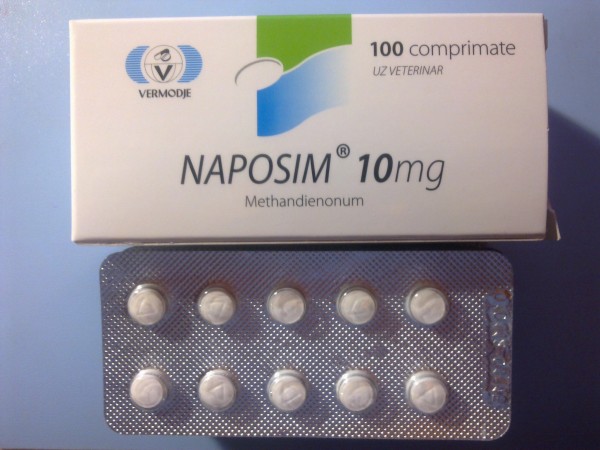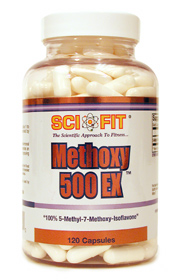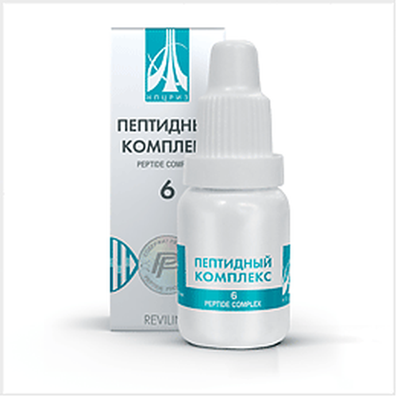14 Dec 2016
Insulin has the whole range of biological effects. As its main targets serve the liver, muscles and fatty tissue playing the leading role in exchange of a glucose, however insulin influences also many other tissues. It is the major hormone responsible for transport, a metabolism and storage by cells of nutrients: it stimulates anabolic processes (utilization and storage of a glucose, amino acids and fatty acids) and brakes catabolic (disintegration of a glycogen, fats and proteins). Under the influence of insulin transport of nutrients and ions in a cell is stimulated, intracellular movement of proteins accelerates, enzymes are activated or inactivated, the amount of proteins by change of rate of a transcription of their genes and broadcast of MRNK (fig. 61.3,61.4) changes.
Some effects of insulin are shown within several seconds or minutes; among them — stimulation of transport of a glucose and ions, phosphorylation and dephosphorylization of enzymes, and even inhibition of a transcription of a gene of fosfoyenolpiruvatkarbocsikinasa (Granner, 1987; O’Brien and Granner, 1996). Achievement of other effects of insulin, in particular for change of a transcription of the majority of genes and change of synthesis of protein, requires several hours. The effect of insulin on a proliferation and a differentiation of cells is shown only in several days. Not it is clear, whether these temporary differences are caused by different mechanisms of intracellular signal transmission or different kinetics of the processes regulated by insulin.
Regulation of glucose transport
The most important physiological effect of insulin is stimulation of transport of a glucose in muscles and fatty tissue. The glucose gets into cells by the facilitated diffusion which is mediated by special proteins — glucose carriers. Five such proteins (GLUT1, GLUT2, GLUT3, GLUT4 and GLUT5) are known; it is considered that they carry out independent transport of a glucose in cells by the facilitated diffusion (Shepherd and Kahn, 1999). Proteins — carriers of a glucose represent glycoproteids with a molecular weight about SO Ltd company; each of them has on 12 transmembrane and - spiral domains. Stimulation by glucose transport insulin, at least partly, is caused by volatile movement of the intracellular vesicles containing proteins of GLUT4hGLUTI to a cellular membrane (Suzuki and of Kopo, 1980; Simpson and Cushman, 1986; fig. 61.3). This effect is reversible: in process of destruction of insulin of squirrel carriers of glucose come back to the intracellular storages. Believe that disturbance of this process serves one of path genetic links of an insulin replacement diabetes mellitus (Shepherd and Kahn, 1999). Please pay attention to Libidon.
Regulation of glucose metabolism
The facilitated diffusion of glucose in cells on gradient of concentration comes to the end with phosphorylation of glucose. Formation of gluco-zo-6-Natrii phosphas from glucose is catalyzed by a hexocinase which four iso enzymes, like proteins — glucose carriers, are distributed in different tissues variously. Activity of two iso enzymes of hexocinase is regulated by insulin. Gecsocinasatipa IV who is often called by glucocinase has the molecular mass of 50 Ltd companies and it is found along with protein GLUT2 in hepatocytes and β-cells. The glucocinase is coded by one gene, but in a liver and islands of a pancreas at a transcription of this gene different pro-motors and different first exons are used (Printz et al., 1993a). Glucocinase gene transcription in a liver is regulated by insulin (Magnuson et al., 1989). Hexocinase like II has molecular weight 100 000; it is present at skeletal muscles, a myocardium and fatty tissue together with protein GLUT4. Insulin regulates a transcription of both a protein GLUT4 gene, and hexocinase gene like II (Printz et al., 1993b).
Glyukozo-6-fosfat serves as the general substrate for two metabolic ways. First, it joins in glycolysis the cascade of enzymatic reactions as a result of which ATP is formed. Many of reactions of glycolysis amplify under the influence of insulin: or due to regulation of a transcription of the genes coding enzymes or due to the phosphorylation or dephosphorylization the serin and treonin of the remains leading to change of activity of enzymes. Secondly, glyukozo-6-Natrii phosphas can turn into glyukozo-1-Natrii phosphas from which the glycogen is synthesized. Insulin stimulates storage of a glycogen, activating a glicogensintetasa (the reaction catalyzed by this enzyme limits rate of glycogenesis) and inhibiting a fosforilasa (the reaction catalyzed by this enzyme limits rate of glycogenolysis). As well as in case of a glycolysis, effects of insulin are mediated by phosphorylation and dephosphorylisation of enzymes; it is the most important mechanism of effect of this hormone. For example, an atsetil-KOA-carbocsilasa and ATF-tsitratliasa are activated at phosphorylation, and glikogensintetasa and pyruvatedehydrogenase — at dephosphorylisation. Dephosphorylisation of the last two enzymes is the result of activation by insulin of phosphatases. Tens of proteins are in this way modified and change the activity (Denton, 1986).
Regulation of genes transcription
There are no doubts in that now that the most important of effects of insulin is regulation of transcription of these or those genes. Inhibition of transcription of gene of fosfoyenolpiruvatcarbocsicinasa can be an example (Granner et al., 1983). This effect of insulin sheds light on a braking mechanism to them a gluconeogenesis (Sasaki et al., 1984) also explains why at insulin resistance characteristic of an insulin diabetes mellitus, the liver synthesizes excess of a glucose (Granner and O’Brien, 1992). More than 100 genes which transcription is regulated by insulin (O’Brien and Granner, 1996) are known, and this list continues to grow. However the mechanism by means of which insulin influences a transcription for the present isn't deciphered.
Receptor of insulin
Insulin renders the effects, being bound to a membranous receptor. These receptors are available for mammals almost on all cells — as that are considered as classical targets of insulin (hepatocytes, myocytes and lipocytes), and on blood cells, a brain and gonads. The number of receptors of insulin fluctuates from 40 (at erythrocytes) to 300 Ltd companies on a cell (at hepatocytes and lipocytes).
The receptor of insulin represents the large transmembrane glycoproteid consisting of two and-subjedinits with a molecular weight of 135 Ltd companies (on 719 or 731 amino-acid rest depending on MRNK splaysing) and two β-subjedinitsa with a molecular weight of 95 Ltd companies (until 620 amino-acid remains). Subjedinitsa are bridged by disulfide communications in heterotetrameasures β-a-a-β (fig. 61.3) (Virkamaki et al., 1999). Both subjedinitsa are formed of the general one-chained precursor as a part of whom the amino-acid sequences and - and β-subjedinitsa are parted by the site consisting of four main amino-acid remains. Subjedinitsa of a receptor are equipped everyone with the function. Alpha subunits are located extracellularly and contain the insulin domain (see above) whereas β-subjedinitsa form the transmembrane domain having tirozinc activity. After linkng of insulin with receptors there is their aggregation and bystry internalization hormone - receptor complexes. As divalent antibodies to an insulin receptor, cross being bound to the next receptors, imitate effect of insulin, and monovalent antibodies have no this property, believe that aggregation of receptors is necessary for start of the cascade of intracellular reactions. After internalization hormone a receptor complex the receptor of insulin either is blasted, or comes back in a cellular membrane.
Phosphorylation tirozin of remains and mechanisms of intracellular signal transmission. The receptor of insulin has own tirozincin activity (Virkamaki et al., 1999). This property also receptors of many factors of body height, for example an epidermal factor of body height, a platelet factor of body height and M-KSF have (Yarden and Ullrich, 1988). Knowledge of the signal transmission mechanism is gained by receptors with own tirozincin activity generally when studying the proteins coded by oncogenes and causing tumoral transformation of cells, in particular Src family tyrosinekinases.
When binding insulin with and-subjedinitsami a receptor quickly there is autofosforilirovanie the tirozin of the remains of β-subjedinitsa. This autocatalytic reaction leads to appreciable intensifying of tirozincin activity of a receptor concerning other proteins. In normal cells there is also a phosphorylation the serin and treonin of the remains of a receptor of insulin, generally under the influence of protein kinases With and And. This last reaction leads to suppression of tirozincin activity of a receptor (Cheatham and Kahn, 1995).
Tirozincin activity of a receptor is necessary for implication of effect of insulin. Mutations which change the ATP-binding center or lead to replacement the tirozin of the remains which are exposed to an auto fosforil on others, lead to depression of own tirozinkinazny activity of a receptor of insulin and weakening of effects of hormone (Ellis et al., 1986). The insulin receptor not capable to an auto fosforil, is completely deprived of activity.
The activated receptor of insulin starts the cascade of intracellular reactions, phosphorylation of four proteins called by insulin receptor substrates — IRS-1, IRS-2, IRS-3 and IRS-4 is first of which (White et al., 1985). After phosphorylation protein IRS-2 gains ability to interact with other proteins which contain BSh-dome-ny (Src called so owing to a homology with a tyrosinekinase). One of them — a fosfatidilinozitol-3-kinase, heterodimeasures, consisting of a catalytic subjedinitsa with a molecular weight of 110 000 (pi 10) and a regulatory subjedinitsa with a molecular weight of 85 000 (r85). Subjedinitsa r85 contains two BSh-domains which are bound to protein IRS-1. The Fosfatidilinozi-tol-3-kinaza catalyzes phosphorylation of fosfoinoziti-d in situation 3 inozitol, and reaction products participate in intracellular signal transmission (fosfoinozitidny system). The Fosfatidilinozitol-Z-kinaza is activated by many hormones and factors which stimulate a proliferation of cells; among them — platelet and epidermal factors of body height and the OOZE-4 (Virkamaki et al., 1999). Effect of this enzyme on a proliferation, apparently, is mediated by activation of a protein kinase In and, perhaps, other kinases.
One of the most potent mitogens the proteins of Ras coded by the oncogenes of the same name; they activate the cascade a mitogen the activated protein cinases. Thought of participation of proteins of Ras in effects of insulin when it became known that insulin among other enzymes activates also this cascade (Avruch et al., 1994). Recently also the mechanism of this participation, however, not up to the end became clear. Activation of receptors with own tirozinkinazny activity, including an insulin receptor, leads to interaction of one more protein containing the SH2 domain — adaptor protein of Grb2 — with fosforilirovanny protein IRS-1. Adagggerny protein of Grb2 is bound to an exchange factor the guaninovykh of nucleotides SOS, and this complex enlarges affinity of proteins of Ras to GTF. The activated protein of Ras interacts with Raf-1 protein (a serine-treoninovoy a kinase) which, in turn, activates the cascade a mitogen - the activated protein kinases. Besides, the activated receptor of insulin fosforilirut the adagen protein of She containing the BSh-domain then that is bound to Grb2 protein. It, apparently, nucleotides of SOS with a cellular membrane, activation of proteins of Ras and Raf-1 and the cascade leads to intensifying of interaction of a factor of exchange mitogen the activated protein cinases. The mechanism by means of which insulin causes a proliferation of cells isn't finalized, but is already clear that multiple are involved in it, it is possible even superfluous, ways of intracellular signal transmission (Avruch et al., 1994).
Metabolic effect of insulin, apparently, is mediated by protein IRS-2. Intracellular movement of proteins — glucose carriers in muscles and fatty tissue, leading to intensifying of transport of a glucose in cells — the main effect of insulin. Movement of proteins carriers is blocked vorg-manniny, an inhibitor of a fosfatidilinozitol-3-kinase. Effect of insulin on a transcription of genes of key enzymes of carbohydrate metabolism is blocked too vortmannin therefore it isn't excluded that it is mediated by protein IRS-2 and substrates of a fosfatidilinozitol-3-cinase.


 Cart
Cart



